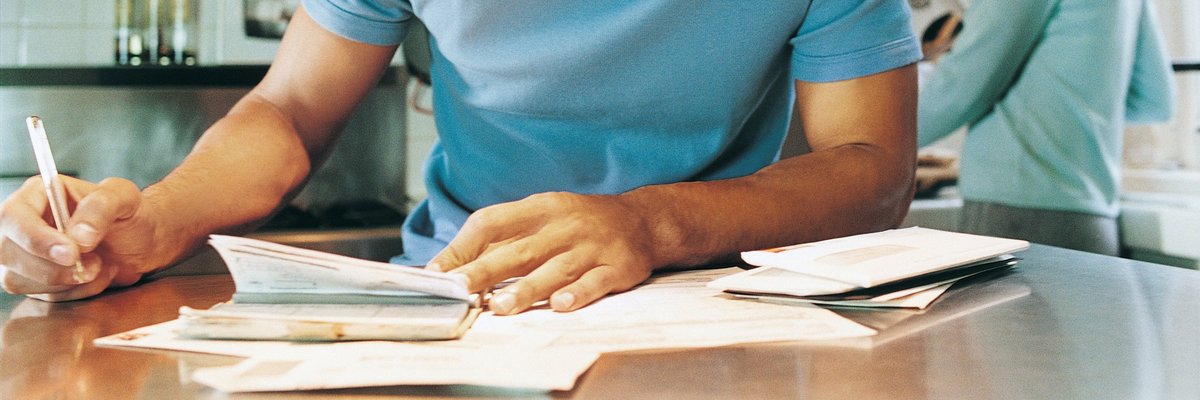Banks Hope You Ignore This: Why $10K in Checking Could Cost You in April 2025

Image source: Getty Images
KEY POINTS
- Many high-yield savings accounts pay 10 times the national average interest rate.
- Keeping $10,000 in checking could cost you over $400 this year in missed earnings.
- We'll break down what to look for in a savings account, and when it does make sense to keep cash in checking.
The average checking account earns a measly 0.07% APY. That means if you have $10,000 sitting in your checking account, you'll earn a whopping $7 in interest for the year. Ouch! That can't even pay for a delicious craft Hazy IPA at my local brewery.
High-yield savings accounts (HYSAs), on the other hand, can offer up to 4.40% APY. Interest earned in a year would be over $400… Which would buy me three to four delicious Hazy IPAs -- per month, for a year!
If you have $10,000 or more sitting in checking, it's time to put that money to work in a better type of account.
How much $10,000 could be earning
So, how much could that $10,000 that's languishing in your checking account be earning you elsewhere?
Here's the math comparing interest rates across different account types, at various balances:
| Cash Balance | Checking (0.07% APY) | HYSA (4.40% APY) |
|---|---|---|
| $5,000 | $3.50 | $224 |
| $10,000 | $7.00 | $448 |
| $20,000 | $14.00 | $897 |
| $50,000 | $35.00 | $2,242 |
With a $10,000 account balance, you're looking at a $441 difference in interest just for moving your money into an HYSA. No investing, no risk. Just smarter saving.
My favorite high-yield savings account right now is CIT Platinum Savings, where you can earn 4.00% APY for balances of $5,000 or more. Open an account today.
Why most people keep too much in their checking accounts
Most of us were taught that our checking account is the default place for our money. It's where your paycheck lands. It's what your debit card pulls from. It's... easy.
But that convenience leads people to continue to build up savings amounts way higher than they should.
Traditional banks love this by the way. They make billions by keeping their customers' cash sitting in low-interest accounts, and never encourage people to move it.
In reality, there's no need to keep more than one or two weeks' worth of expenses in a checking account. As long as you've got enough to cover immediate bills, any excess cash is probably too much.
What to look for in a high-yield savings account
If you're ready to put your cash pile to work, here are some things to consider when evaluating high-yield savings accounts:
- Competitive APY: Look for accounts offering 3.60% APY or higher. Rates change often, so it's worth checking every few months.
- No monthly fees: You shouldn't have to pay to save. Plenty of online banks offer free accounts with no minimums or maintenance fees.
- FDIC insurance: Make sure your money is protected and you're working with a reputable bank.
- Easy transfers: You'll want quick access to your cash should you need it to cover large bills or if an emergency pops up. Typical transfer times should be one to three business days.
- A great mobile app: This makes it easy to quickly log in and manage your money.
Our editorial team has spent hundreds of hours researching, reviewing, and testing the best savings accounts. Check out our best high yield savings accounts for April 2025.
Give every dollar a job
Checking accounts are perfect for daily use. Like for paying bills, buying groceries, and getting your paycheck deposited. But they're not built for growth.
Every extra dollar you have sitting idle, move it somewhere it can work harder for you. A high-yield savings account gives those dollars a job, while also keeping them accessible in case you need the money in a pinch.
Our Research Expert
We're firm believers in the Golden Rule, which is why editorial opinions are ours alone and have not been previously reviewed, approved, or endorsed by included advertisers. Motley Fool Money does not cover all offers on the market. Motley Fool Money is 100% owned and operated by The Motley Fool. Our knowledgeable team of personal finance editors and analysts are employed by The Motley Fool and held to the same set of publishing standards and editorial integrity while maintaining professional separation from the analysts and editors on other Motley Fool brands. Terms may apply to offers listed on this page. APYs are subject to change at any time without notice.


